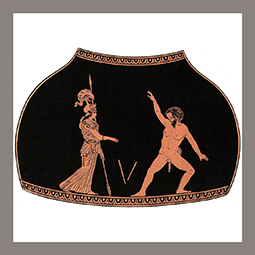Author: A. Averna
Download article as .pdf: Anagni: i templi dell’arx e le terrecotte architettoniche
 The paper presents a rereading of the corpus of architectural terracottas from the excavations of the acropolis of Anagni in the early 2000s. The significant discoveries made during those investigations contributed to tracing, in the heavy transformations of the medieval and Renaissance times, fragments of the urban arrangement of this sector of the ancient city and shreds of the architecture of the sacred buildings which, renewed several times from the Archaic period until the late Republican, they lived in the sanctuary located on the arx. The study conducted on the fragments already published by Sandra Gatti and on others still unpublished has allowed us to reconsider the roofing systems and put forward reconstructive hypotheses on the different architectural phases.
The paper presents a rereading of the corpus of architectural terracottas from the excavations of the acropolis of Anagni in the early 2000s. The significant discoveries made during those investigations contributed to tracing, in the heavy transformations of the medieval and Renaissance times, fragments of the urban arrangement of this sector of the ancient city and shreds of the architecture of the sacred buildings which, renewed several times from the Archaic period until the late Republican, they lived in the sanctuary located on the arx. The study conducted on the fragments already published by Sandra Gatti and on others still unpublished has allowed us to reconsider the roofing systems and put forward reconstructive hypotheses on the different architectural phases.






